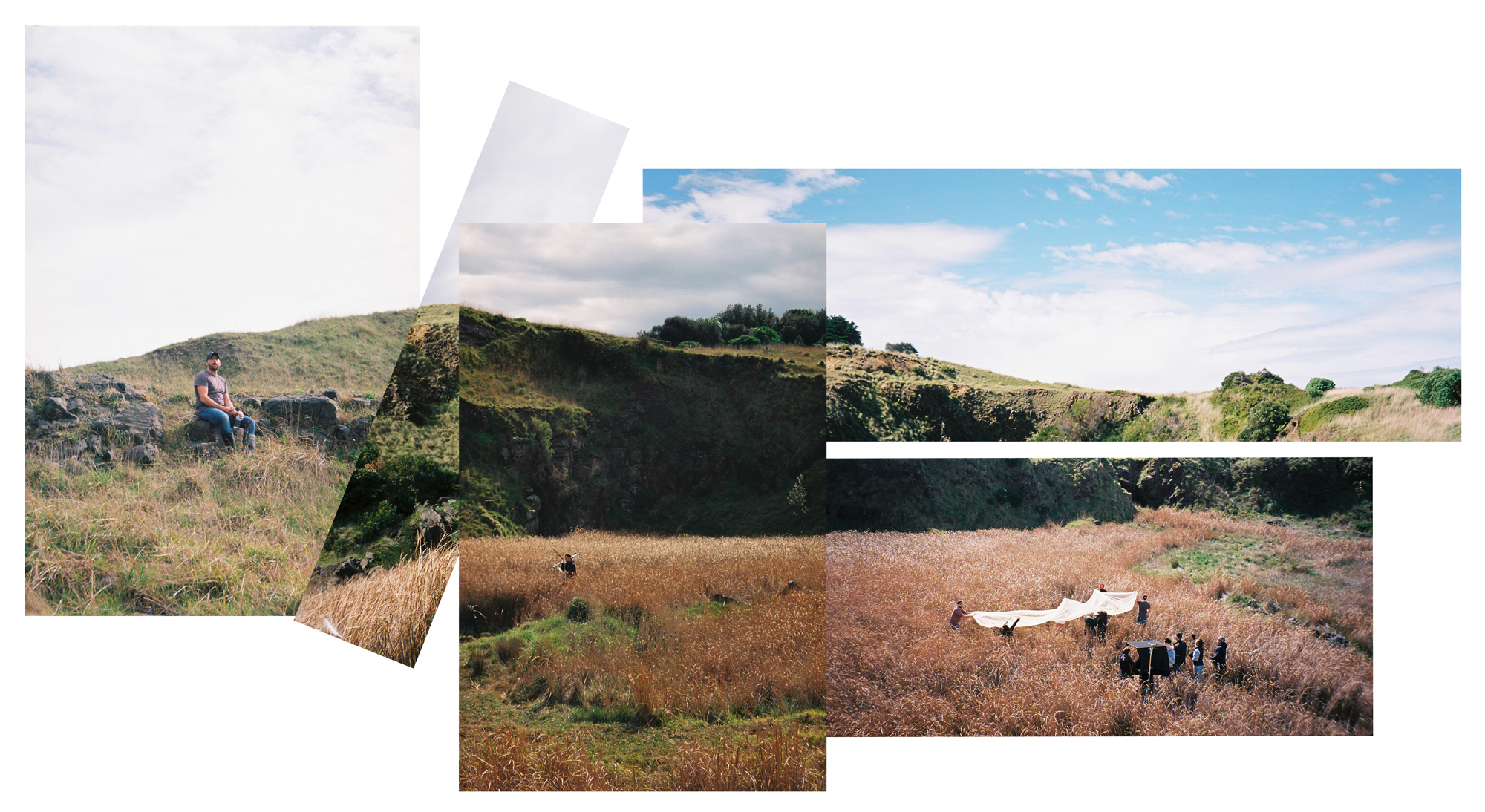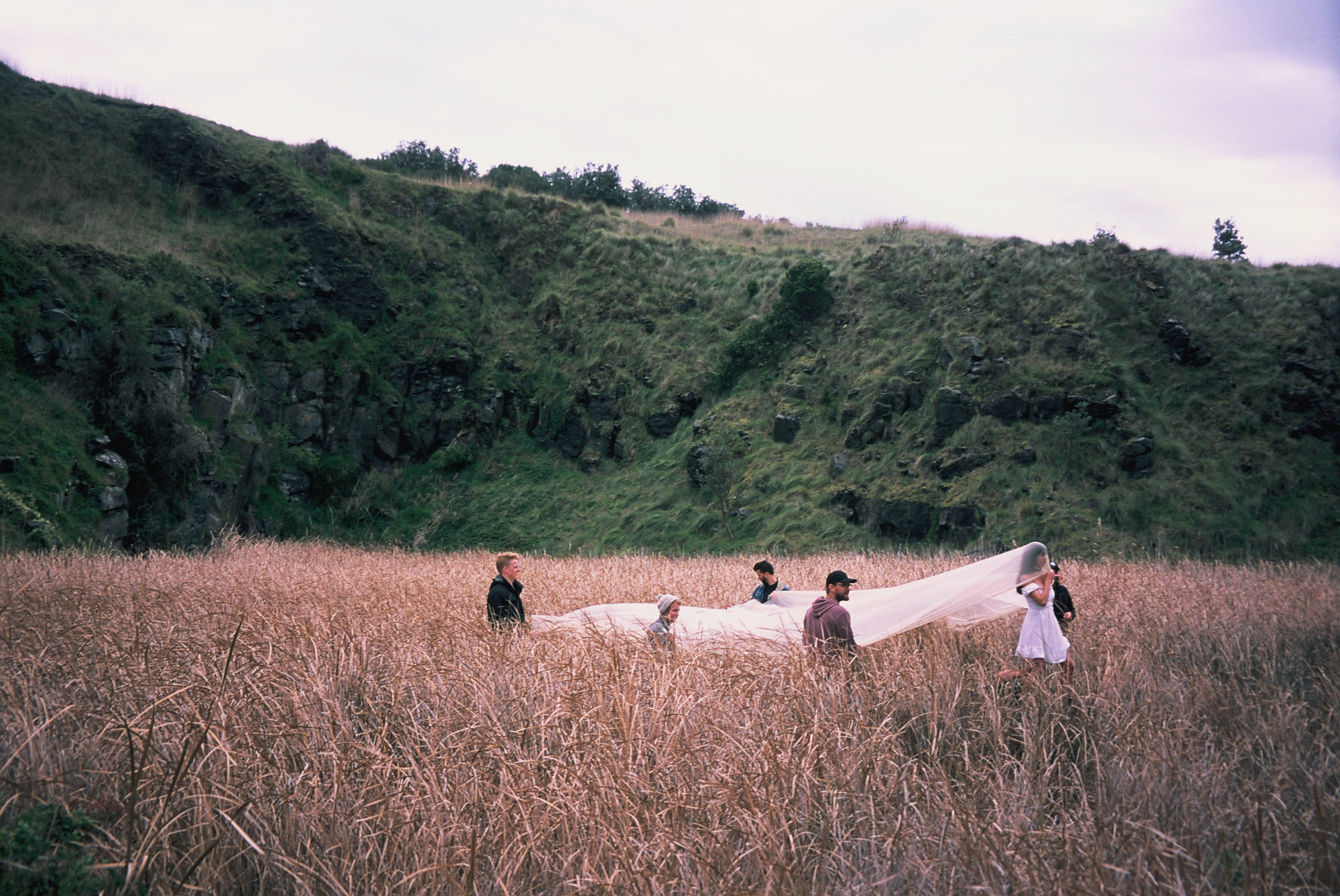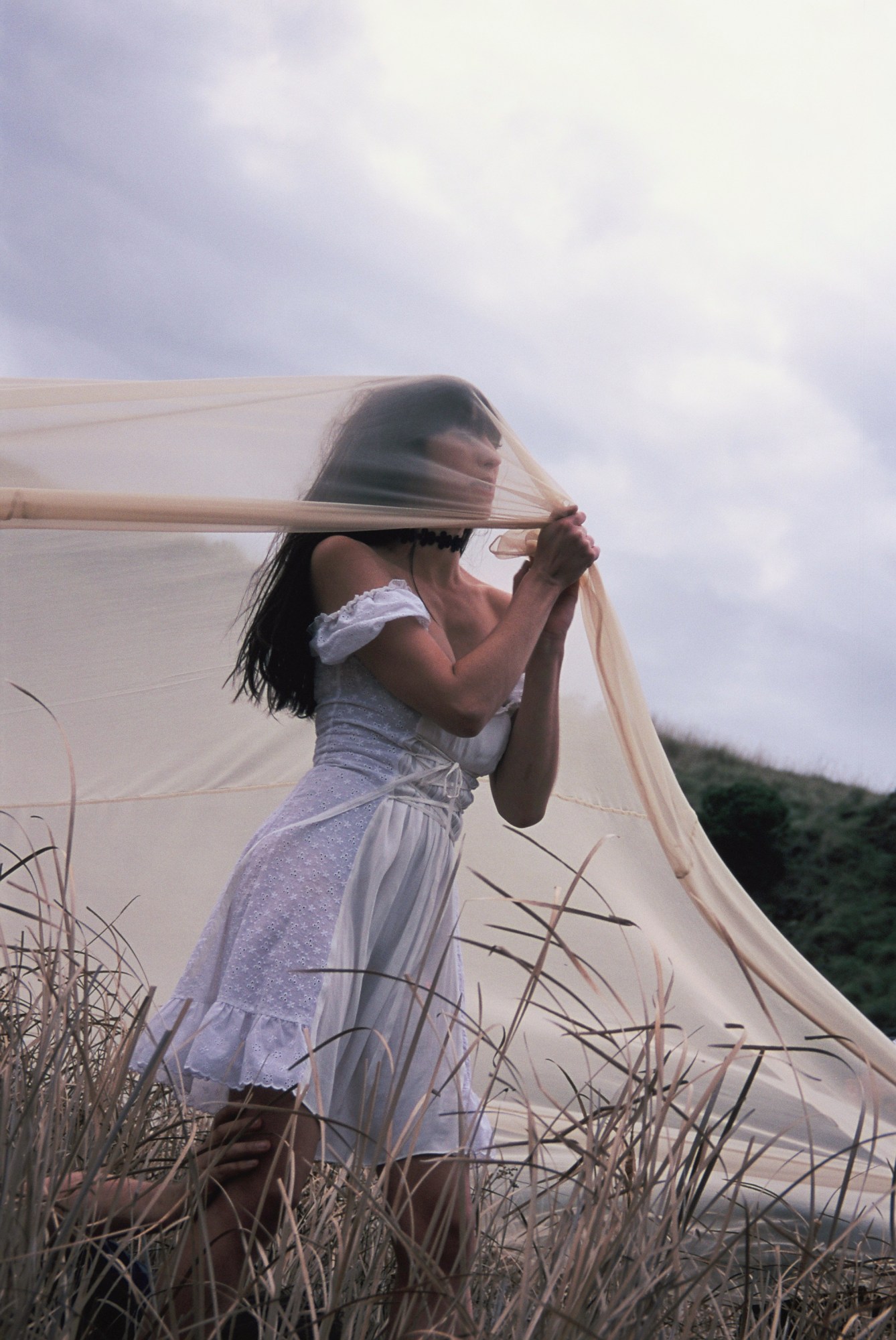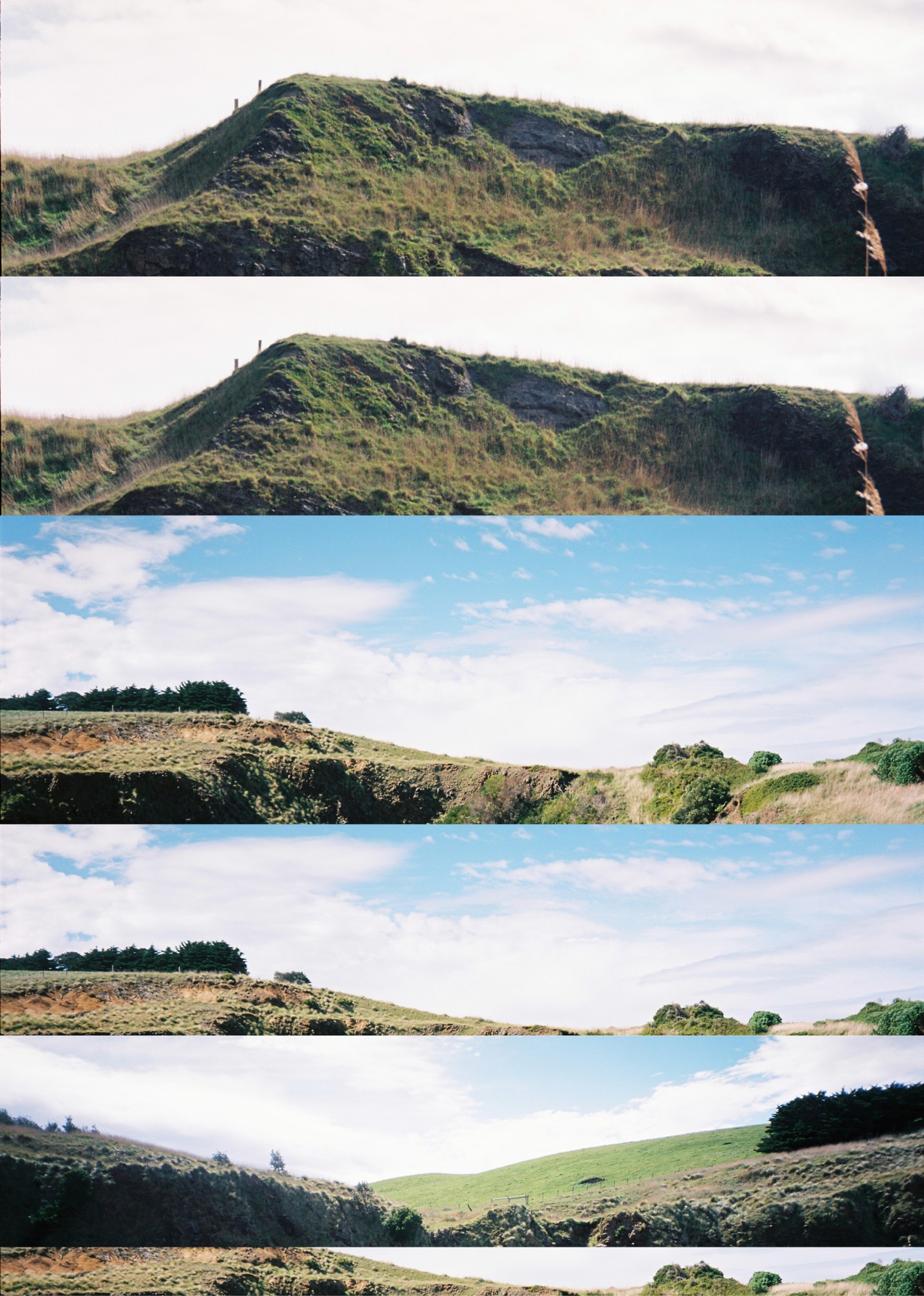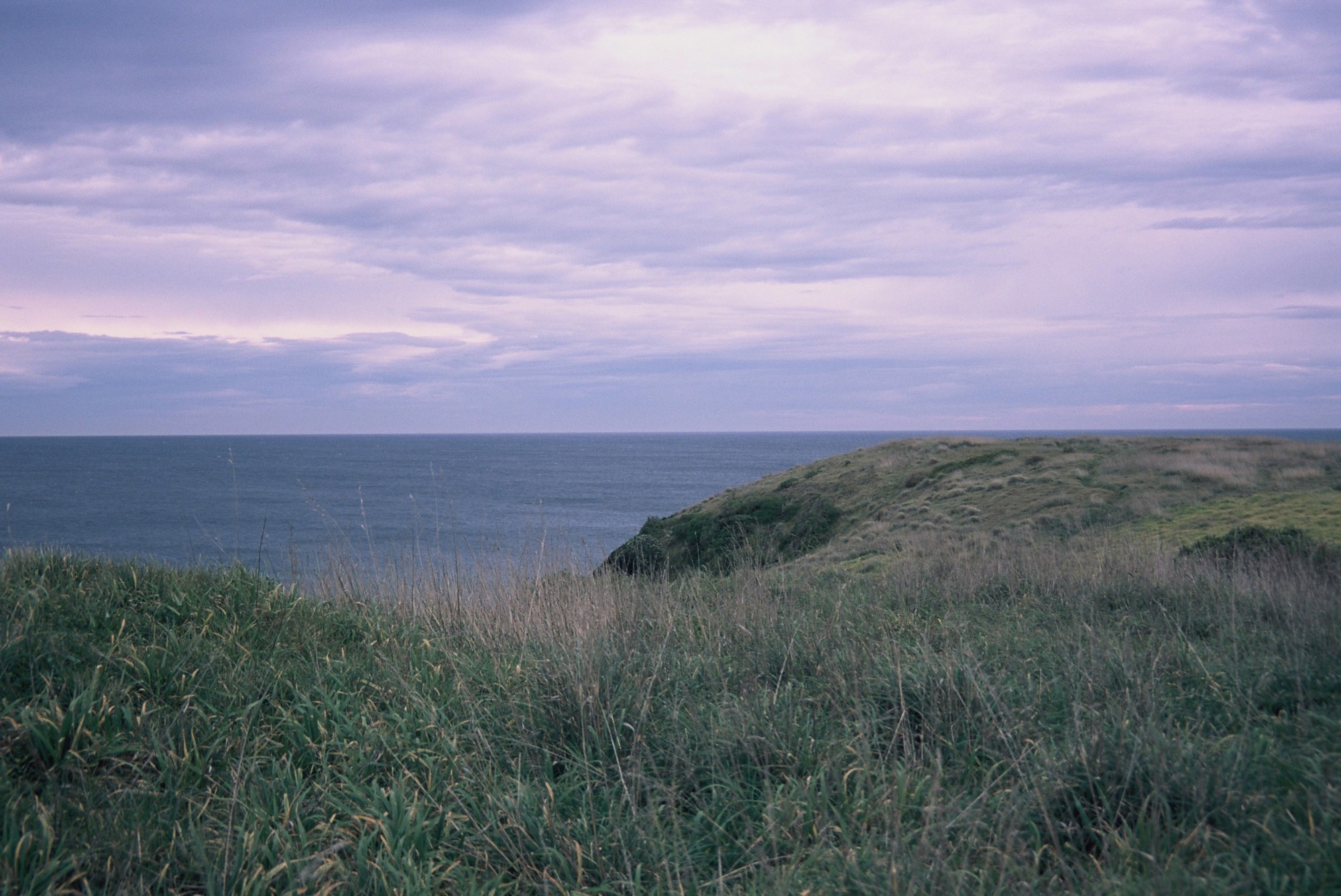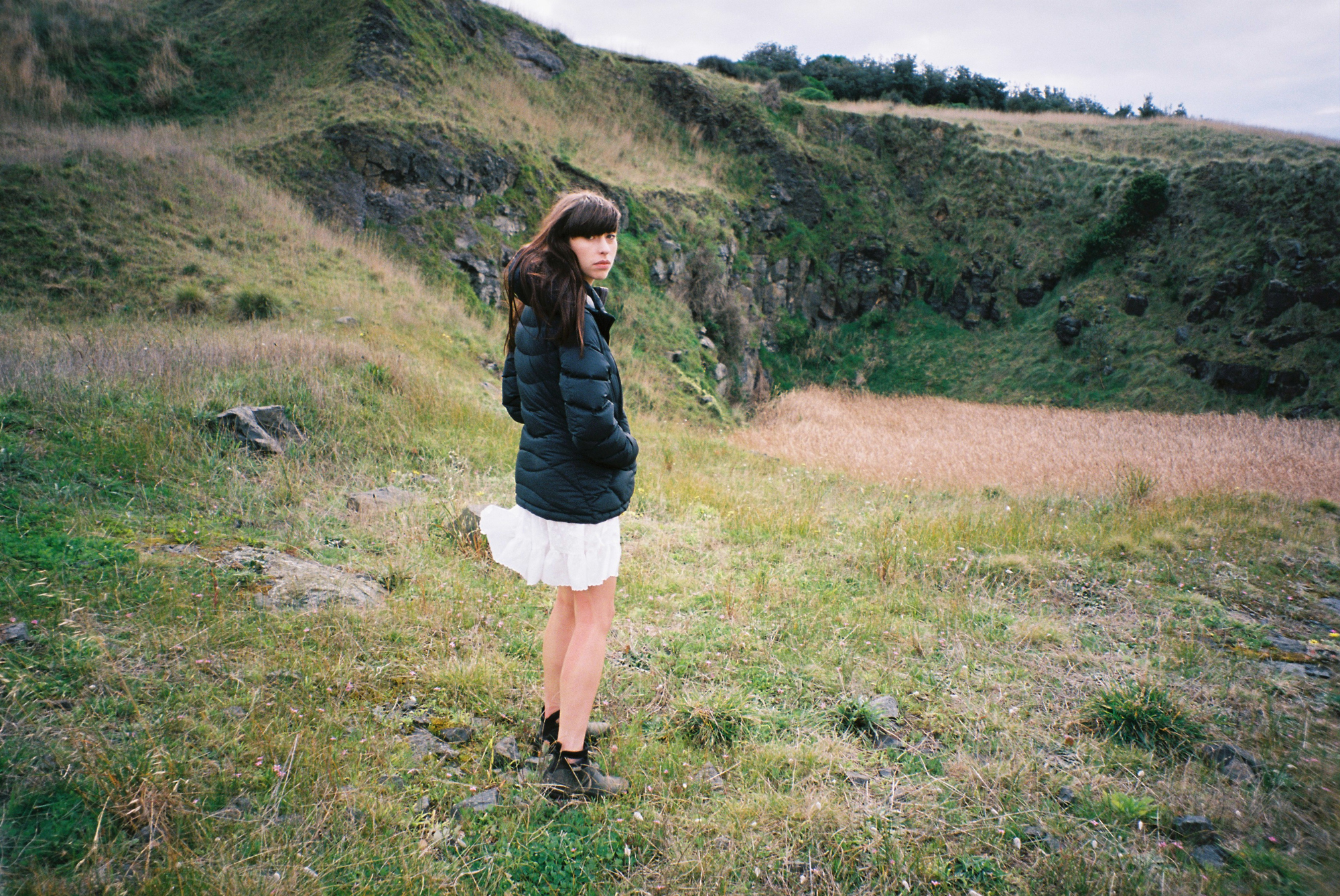I’m in the middle of what might best be described as a heath: rolling hills, unkempt grass rippling in a Saturday afternoon breeze. Well, maybe more of a gust. The sun is being skittish. Kimbra stands surrounded by reeds in a Daisy dress and Blundstones, careful of the mud below. She’s wrestling with a mesh banner held above her by a half-dozen strong crew, singing the chorus of Everybody Knows over and over — everybody knows about what you do/everybody saw and told the truth. (The clip will be her first since 2014’s The Golden Echo). I try to imagine what kind of stamina it takes to do what she does. She arrived on set at 5AM and will stay until the sun sets, then do it all over again tomorrow and the day after that — another two clips for Primal Heart, her third album.
In 2011, when she released her debut album Vows, Australia and her native New Zealand were awash with praise and adoration. For a while, it felt like Kimbra was our pop heir-apparent. It wasn’t long before she owned ARIAs, New Zealand Music Awards, and two Grammys. She was working with Brian Wilson, Thundercat, and Daniel Johns; touring the world; she recorded “Good Intent” in Simlish for a Sims 3 expansion.
Now, there’s a waterfall to our right and an ocean behind us. It feels like the right place to make a big move, and Everybody Knows could be it. The crew break for lunch, and I perch beside Kimbra on a log clutching polystyrene coffee cups. In the half hour we have before shooting resumes, Kimbra talks about expectations, going back to your roots, and living in the real world.
What’s the hardest video shoot you’ve ever been on, in terms of braving the elements?
I actually did a video shoot ages ago with Miami Horror. It was similar to this; it was super early morning, but up on top of a mountain in Sydney. When you’re super elevated with mountain winds in winter – that’s hectic. Then, of course, rocking with Gotye was probably one of the most challenging clips, in terms of endurance. Anything with body paint involved, you have to be very patient for all the other artists working, being a canvas. At least with this I can be expressive.
Still, this is quite a challenging one. But I imagine it’s going to be worth it.
Another one that was really challenging we shot in a legitimate mental asylum — Come Into My Head. Even though it wasn’t a operating as anl asylum anymore, things hadn’t changed that much.
Talk to us about this clip.
It’s conceptual. We wanted this to feel like a real doorway into the record. I’m choosing to work with Guy [Franklin, Kimbra’s friend and long time collaborator] again after four years. We’ve worked together for a very long time — I really respect Guy as a director, he’s always thinking emotionally — and the art we created in the beginning of my career was some of the most important for me, especially Settle Down. We’re actually using the exact same camera as we used for the Settle Down video. It’s nice to come full-circle. I do have to say, it’s always nerve-wracking [working] with him, because I know I’m going to be pushed!
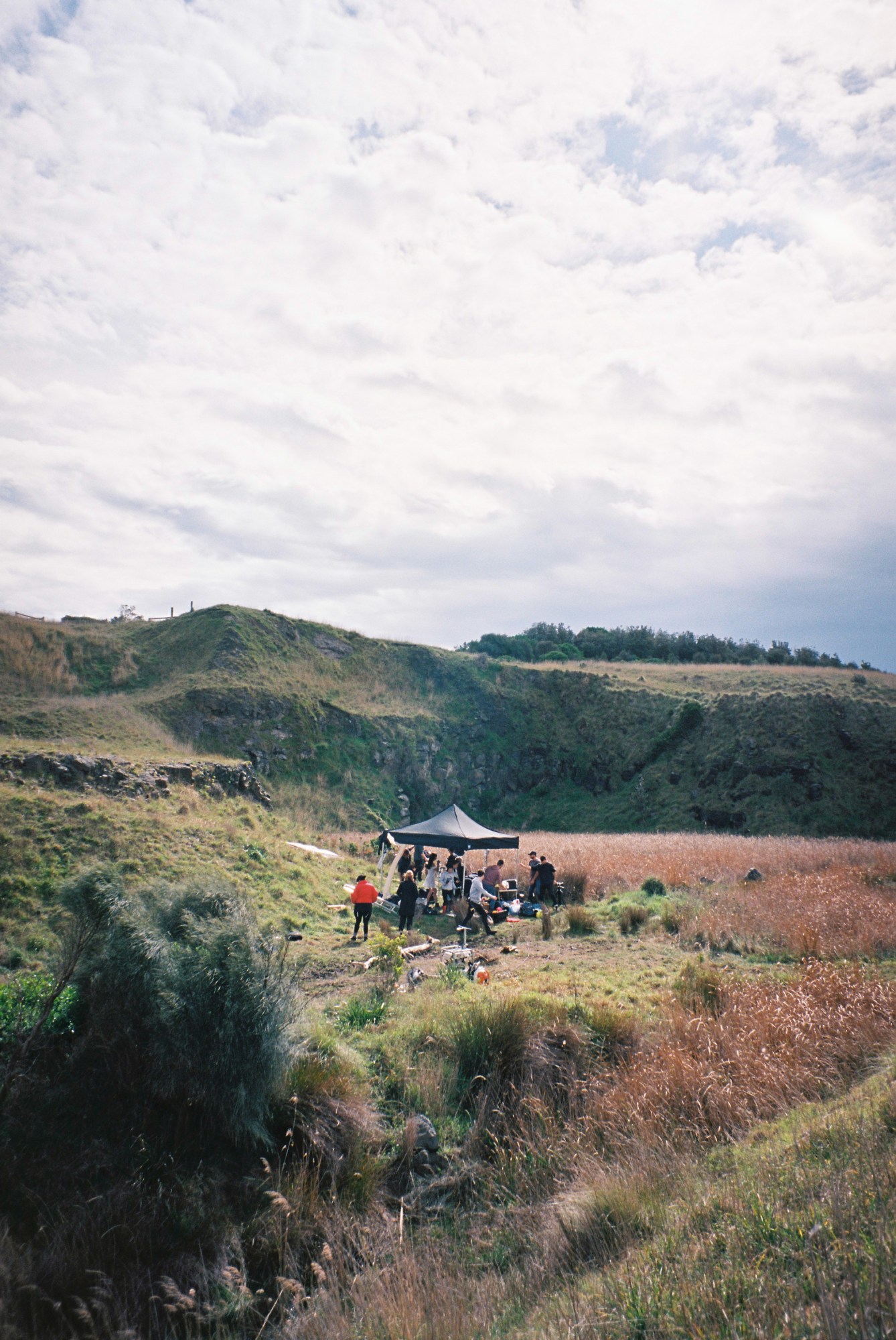
Thinking back to those early days of your career, it felt like people really wanted you to be a pop star — whether or not you wanted to. I don’t think it’s healthy to push an artist like that. It’s nice that it seems that a little bit of that pressure is off now.
I put a lot less pressure on myself now than I used to when I was younger too. These days, I have a lot of people who trust me in the music industry. If you’re unsure of what you’re doing, it’s easier for people to put you in a corner. I trust my team — I had to have that trust to hand this new record over. It feels different when you’re midway through it, subconsciously managing people’s expectations. Now it’s more about making great art to accompany the music. There’s no more tampering or going back.
How did you and the label come to decide on this being the first single?
The label were very strong about Everybody Knows being “the one,” which surprised me. When I listen to the record, there are others that felt more like the banger, or the single, but this seemed to really resonate with people. The label felt it was a bold song for me – the vocal was very upfront, it had energy, courage, and strength. We were actually tossing up between two songs for the first single, but there’s something more tender, more vulnerable about Everybody Knows. And that’s what this record represents for me: It’s a stepping out album, I’m stripping away some layers. Less density and surrealism and more groundedness.
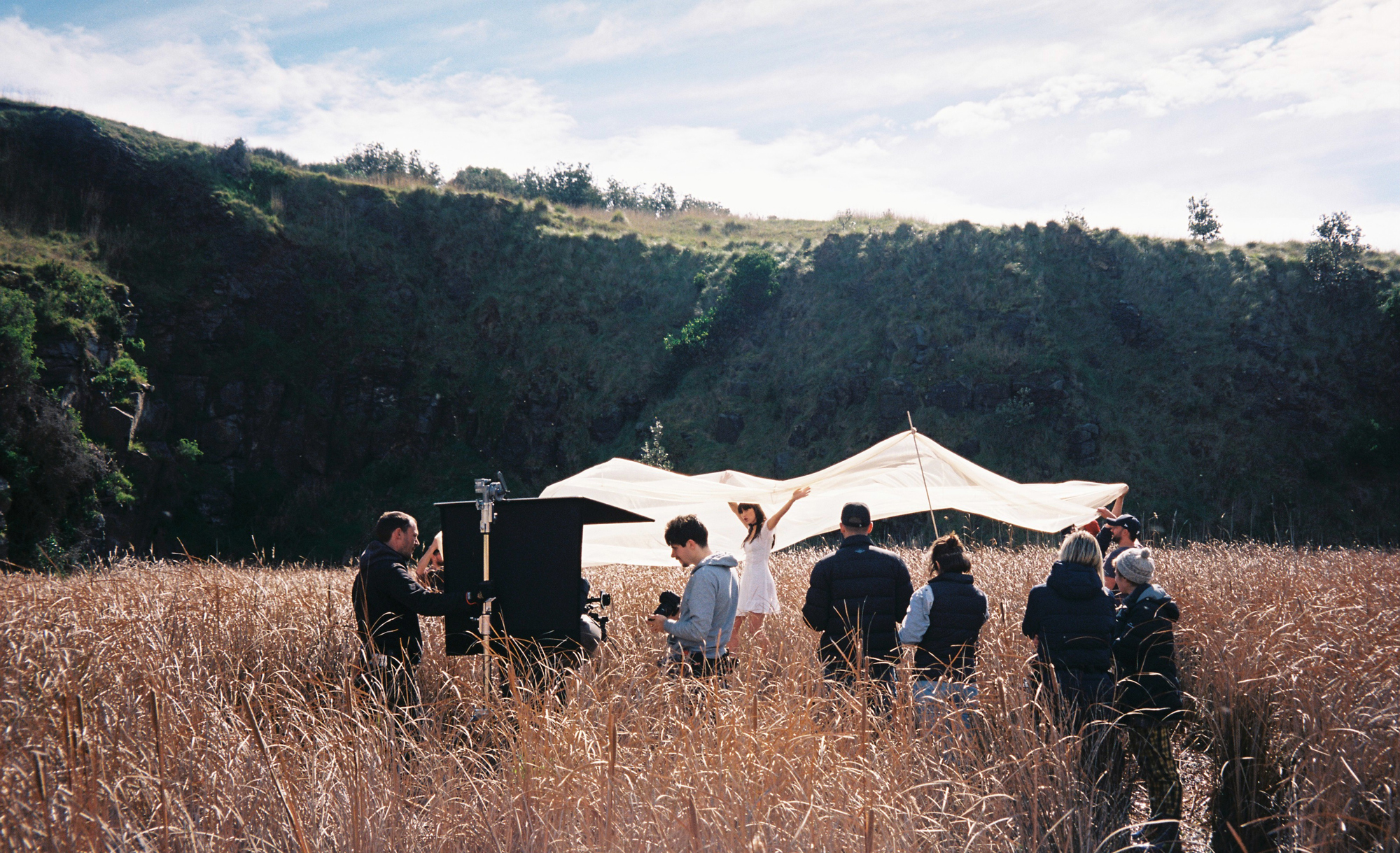
It’s very direct.
And more focused. All of my music videos until now have been set in an imaginary world, or more surreal version of this reality. We wanted these clips to feel set in the real world. My headspace is a little more rooted in the world these days, and part of that is ’cause I just moved my life from LA to New York. I lived in LA for nearly two years. I did a good stint, it felt like. Now I’ve been in New York for two years.
That’s a beautiful thing. I think audiences have grown sick of curated artists, we can see through that.
You get desensitised to it, don’t you. For me, this change has happened organically. I really went deep into maximalist pop in the last record, which just doesn’t excite me as much anymore. It’s about finding what excites me. I think the album’s title, Primal Heart, expresses a sense of origin, of fundamental instinct. Primality is very essential to who we are. That’s I want to say with my music now, as opposed to creating worlds to escape into.
It’s a difficult thing to task yourself with: writing about the most fundamental parts of being human. It’s not really as easy as dreaming up these fantasy worlds.
I think you’ve got to embrace the complexity and the nuance of being human There’s so much duality that comes from within us. We’re highly primal in the sense that we’re full of self preservation and fear, but at the same time we have an incredible capacity for love and forgiveness. We want to evolve our species, and we want to better our world. I’m trying to dance in the space of that duality. I think that’s where we find connect.
What are you listening to at the moment?
I love the new Grizzly Bear album, I’m quite deep into that. I’m listening to an artist called Gabriel Garzón Montano, an amazing artist from New York. Also I’ve gotten really into an artist called Five, I collaborated with them earlier in the year in London. I listen to a lot of SZA.
